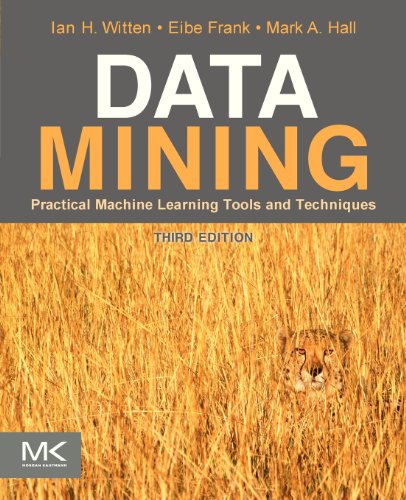Data Mining: Practical Machine Learning Tools and Techniques
Introduction
Data mining is a critical process in extracting valuable insights from large datasets. With the advent of machine learning, businesses can now leverage sophisticated algorithms to uncover patterns, predict outcomes, and make data-driven decisions. This white paper explores practical machine learning tools and techniques for data mining, real-world use cases, and how Keen Computer and IAS Research can support organizations in implementing these solutions effectively.
Machine Learning Tools for Data Mining
1. Scikit-Learn
- A powerful Python library for classical machine learning algorithms.
- Supports regression, classification, clustering, and dimensionality reduction.
- Ideal for quick prototyping and small to medium-sized datasets.
- Reference: Pedregosa et al., "Scikit-learn: Machine Learning in Python," Journal of Machine Learning Research, 2011.
2. PyTorch and TensorFlow
- Best suited for deep learning and neural networks.
- Enables advanced feature extraction and predictive modeling.
- Provides scalable solutions for handling large datasets.
- Reference: Paszke et al., "PyTorch: An Imperative Style, High-Performance Deep Learning Library," NeurIPS, 2019.
3. RapidMiner
- A user-friendly tool with an intuitive interface.
- Supports automated machine learning (AutoML) for business intelligence.
- Useful for predictive analytics and anomaly detection.
- Reference: Hofmann & Klinkenberg, "RapidMiner: Data Mining Use Cases and Business Analytics Applications," Chapman & Hall/CRC, 2016.
4. WEKA
- A Java-based open-source tool for exploratory data analysis.
- Includes a variety of machine learning algorithms and visualization capabilities.
- Often used in academic research and small-scale projects.
- Reference: Witten et al., "Data Mining: Practical Machine Learning Tools and Techniques," Morgan Kaufmann, 2016.
5. Apache Spark MLlib
- A distributed computing framework for big data analytics.
- Scales machine learning tasks across multiple nodes efficiently.
- Ideal for large-scale enterprise applications.
- Reference: Meng et al., "MLlib: Machine Learning in Apache Spark," Journal of Machine Learning Research, 2016.
Use Cases of Data Mining and Machine Learning
1. Fraud Detection in Finance
- Identifying fraudulent transactions using anomaly detection models.
- Credit risk assessment using predictive analytics.
- Example: Banks use machine learning to detect unusual spending patterns.
- Reference: Bolton & Hand, "Statistical Fraud Detection: A Review," Statistical Science, 2002.
2. Customer Segmentation in Retail
- Clustering techniques to group customers based on purchasing behavior.
- Personalized marketing campaigns using recommendation systems.
- Example: E-commerce platforms use machine learning to suggest relevant products.
- Reference: Aggarwal, "Recommender Systems: The Textbook," Springer, 2016.
3. Healthcare Predictive Analytics
- Diagnosing diseases using classification models.
- Predicting patient readmission rates using regression analysis.
- Example: Hospitals use AI to predict the likelihood of complications.
- Reference: Obermeyer & Emanuel, "Predicting the Future—Big Data, Machine Learning, and Clinical Medicine," New England Journal of Medicine, 2016.
4. Supply Chain Optimization
- Demand forecasting using time series analysis.
- Inventory management using predictive maintenance.
- Example: Logistics companies use AI to optimize warehouse stocking.
- Reference: Choi et al., "The Role of Data Analytics in Supply Chain Management," Journal of Business Logistics, 2017.
5. Cybersecurity Threat Detection
- Detecting network intrusions with anomaly detection algorithms.
- Automating threat intelligence using natural language processing (NLP).
- Example: Enterprises use AI to identify malicious activities in real time.
- Reference: Sommer & Paxson, "Outside the Closed World: On Using Machine Learning for Network Intrusion Detection," IEEE Symposium on Security and Privacy, 2010.
How Keen Computer and IAS Research Can Help
Keen Computer: Enabling Scalable AI Solutions
Keen Computer specializes in deploying machine learning solutions tailored for businesses. Our expertise includes:
- Implementing end-to-end AI pipelines for data mining.
- Building scalable applications using cloud-based ML frameworks.
- Providing training and consulting on AI-driven business intelligence.
- Research collaborations with industry partners to develop AI-driven solutions.
IAS Research: Advanced AI and Machine Learning R&D
IAS Research focuses on cutting-edge artificial intelligence and data science innovations. Our services include:
- Developing custom machine learning models for specific industry needs.
- Conducting research on emerging AI trends and technologies.
- Collaborating with businesses for AI-powered digital transformation.
- Enhancing cybersecurity through AI-driven threat detection and response systems.
Conclusion
Data mining with machine learning offers transformative benefits for businesses across industries. By leveraging tools like Scikit-Learn, PyTorch, and Apache Spark, companies can extract actionable insights and drive decision-making. Keen Computer and IAS Research provide the expertise and resources needed to implement, scale, and optimize AI-driven solutions effectively.
For more information on how we can help your business leverage data mining, contact Keen Computer (keencomputer.com) or IAS Research (ias-research.com) today.
References
- Pedregosa et al., "Scikit-learn: Machine Learning in Python," Journal of Machine Learning Research, 2011.
- Paszke et al., "PyTorch: An Imperative Style, High-Performance Deep Learning Library," NeurIPS, 2019.
- Hofmann & Klinkenberg, "RapidMiner: Data Mining Use Cases and Business Analytics Applications," Chapman & Hall/CRC, 2016.
- Witten et al., "Data Mining: Practical Machine Learning Tools and Techniques," Morgan Kaufmann, 2016.
- Meng et al., "MLlib: Machine Learning in Apache Spark," Journal of Machine Learning Research, 2016.
- Bolton & Hand, "Statistical Fraud Detection: A Review," Statistical Science, 2002.
- Aggarwal, "Recommender Systems: The Textbook," Springer, 2016.
- Obermeyer & Emanuel, "Predicting the Future—Big Data, Machine Learning, and Clinical Medicine," New England Journal of Medicine, 2016.
- Choi et al., "The Role of Data Analytics in Supply Chain Management," Journal of Business Logistics, 2017.
- Sommer & Paxson, "Outside the Closed World: On Using Machine Learning for Network Intrusion Detection," IEEE Symposium on Security and Privacy, 2010.



